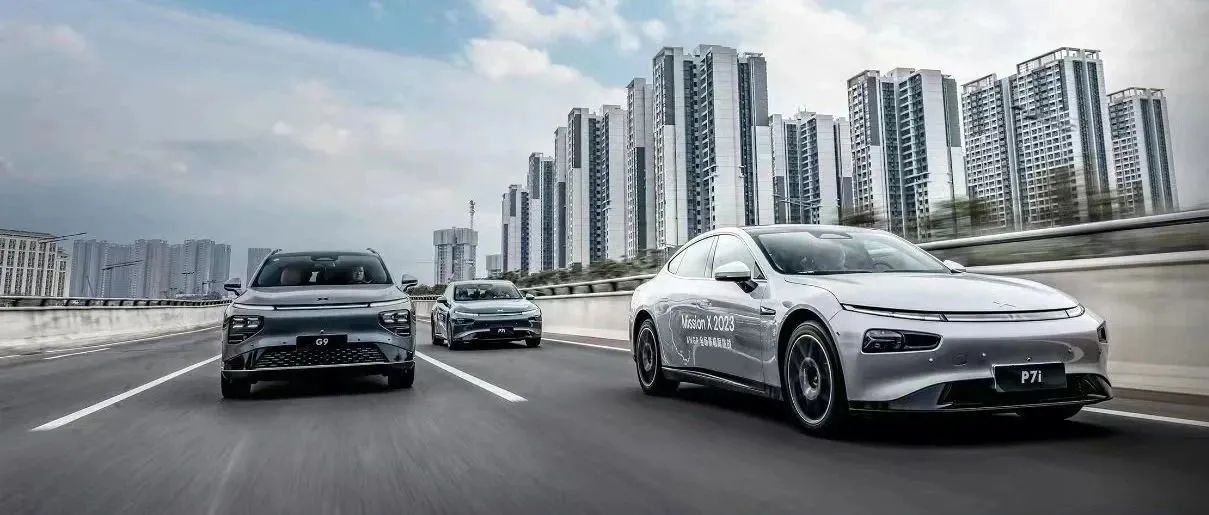Translation:
Author | Wei Xing
Editor | Pan Tan
Recently, at the Xiaopeng Motors Mission X 2023 XNGP All-Scenario Extreme Challenge Technology Sharing Conference, Dr. Wu Xin, Vice President of Xiaopeng Motors’ Autopilot Center, announced that starting from the evening of March 31st, a new version of OTA will be launched – Xmart OS 4.2.0, officially opening the first-stage capabilities of XNGP to Xiaopeng G9 and P7i Max users.

Key Info at a Glance:
-
Starting from the evening of March 31st, the first-stage capabilities of XNGP will be launched, covering G9 Max and P7i Max models;
-
Supports city NGP in Shanghai, Shenzhen, and Guangzhou with high-precision map coverage, enabling intelligent navigation assisted driving from Point A to Point B within the city;
-
Nationwide non-map cities will have straight-driving traffic light recognition start-stop and cross-lane obstacle avoidance capabilities;
-
During the second half of 2023, lane-change, overtaking, and left-right turn capabilities will be available in most non-map cities;
-
Xiaopeng P5 P series models will also simultaneously launch city NGP in Shanghai;
-
Full-scenario coverage expected to be achieved by 2024;
-
The ultimate goal of XNGP is to achieve a near L4-level intelligent driving experience with point-to-point capabilities across all scenarios;
-
AI-driven cars will definitely perform better than human-driven ones in the future;
-
Full-scenario coverage will be achieved between 2024 and 2025;
-
XNGP’s competitiveness is on par with Tesla;
-
The all-new next-generation high-speed NGP will be launched in the next major OTA version.
What is XNGP?
XNGP Intelligent Driving Assistance System is Xiaopeng Motors’ new generation of intelligent driving systems after XPILOT, which possesses full-scenario intelligent driving-assistance capabilities.
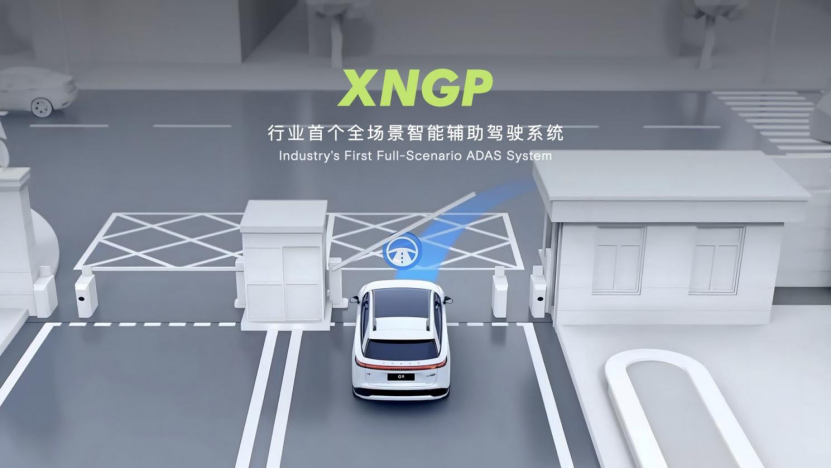 XNGP, as a brand-new generation of intelligent assisted driving systems, maintains capabilities such as high-speed NGP and urban NGP in areas with high-precision maps. In areas without high-precision maps, it will gradually add new capabilities based on an enhanced LCC version, ultimately making the functionality in mapless areas infinitely close to NGP.
XNGP, as a brand-new generation of intelligent assisted driving systems, maintains capabilities such as high-speed NGP and urban NGP in areas with high-precision maps. In areas without high-precision maps, it will gradually add new capabilities based on an enhanced LCC version, ultimately making the functionality in mapless areas infinitely close to NGP.
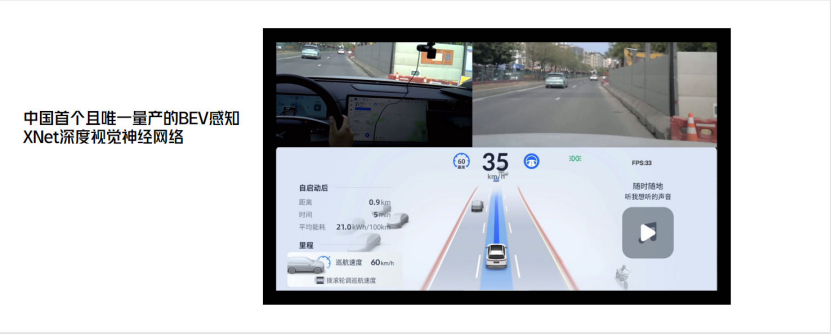
This is mainly attributed to the XNet deep vision neural network, which is also the first and only BEV perception system produced in China. With its strong environmental perception ability, XNet can perform multi-frame temporal pre-fusion of data collected by multiple cameras, output 4D information of dynamic targets and 3D information of static targets, significantly enhancing intelligent driving assistance, especially in complex urban scenarios, in terms of perception, prediction, decision-making, and execution.
Compared to the first-generation visual perception architecture, XNet replaces complex handwritten post-processing logic with neural networks, achieving end-to-end data-driven algorithm iteration. In the future, users will no longer be restricted by high-precision maps and can quickly enjoy safer and more efficient travel experiences brought by high-level intelligent driving assistance in more cities and scenarios.
Moreover, although XNGP comes standard on the MAX models of Xiaopeng, urban NGP is applicable to XNGP systems and XPILOT systems with corresponding software services. Function definitions are the same under different systems, but performance may vary slightly due to hardware differences between vehicles. In other words, there’s no need to worry if you purchased an XPILOT P7, as it still supports urban NGP, albeit with possibly fewer features than a P7i.
“Three-Step” Strategy
According to the plan, XNGP will be implemented in three steps:
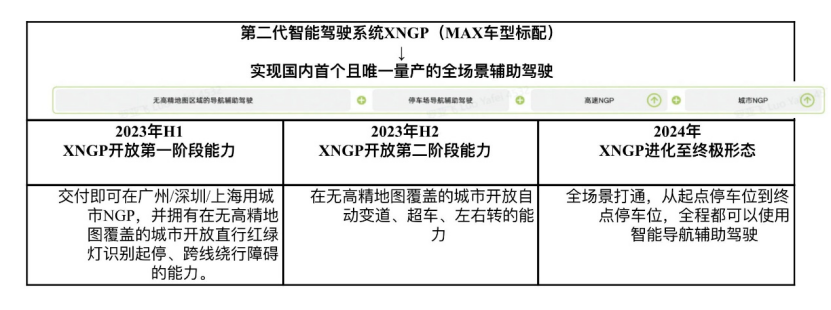
First step: In H1 of 2023, XNGP will unveil its first-phase capabilities;
Upon delivery, users will be able to use urban NGP in Guangzhou, Shenzhen, and Shanghai and have the capacity to recognize and start/stop at straight red and green traffic lights and bypass obstacles by changing lanes in cities without high-precision map coverage.Translate the following Markdown Chinese text into English Markdown text, maintaining the HTML tags in a professional manner within the Markdown. Only provide the output.
Step 2: In H2 of 2023, XNGP opens the second phase of capabilities;
Capability for automated lane change, overtaking, and left/right turns in cities without high-precision map coverage.
Step 3: In 2024, XNGP evolves to its ultimate form;
Full-scene connectivity, from the starting parking spot to the destination parking spot, the entire journey can utilize intelligent navigation-assisted driving.
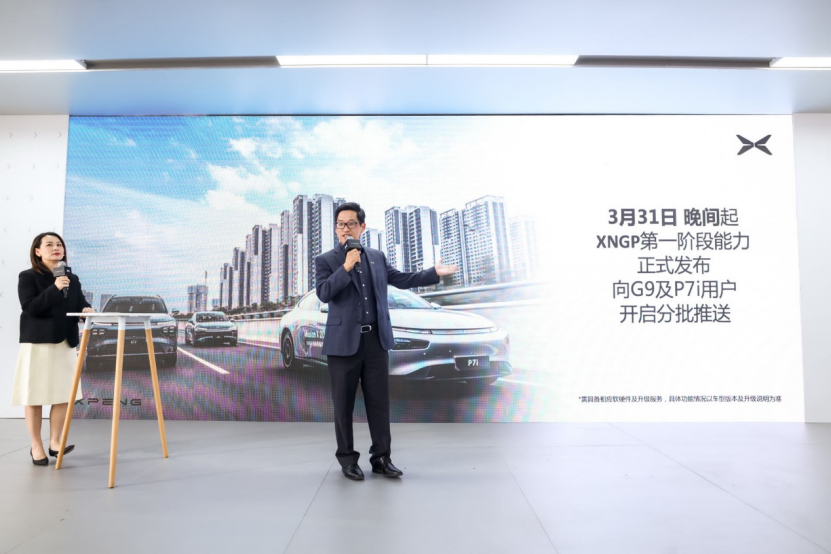
Currently, XNGP has achieved the first phase capabilities, upgrading and iterating city NGP intelligent navigation-assisted driving, and map-less area capabilities, including the enhanced LCC lane centering assistance, independent of high-precision maps, adding straight-line traffic light start-stop function and cross-lane obstacle bypass function.
According to the plan, XNGP will open its second phase capabilities in the second half of the year, mainly to enable automatic lane change, overtaking, and left/right turns in cities without high-precision map coverage.
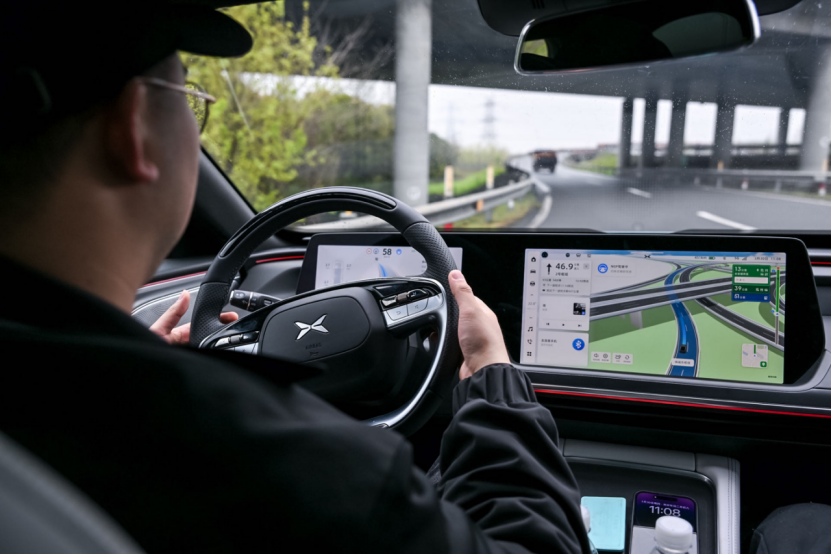
Additionally, the next-generation high-speed NGP is expected to be available to users with XNGP systems in the next major OTA version. It is based on the new technical architecture of XNGP, combined with the R&D experience brought by city NGP, and has improvements in safety, usability, comfort, traffic efficiency, and interaction methods.
Test drive experience
Before the sharing session, Electrek had the opportunity to test drive the XNGP engineering version of the Xpeng G9 and the new P7i, getting an early taste of the next-generation high-speed NGP and city NGP. Here’s a share of the current engineering version’s actual experience.
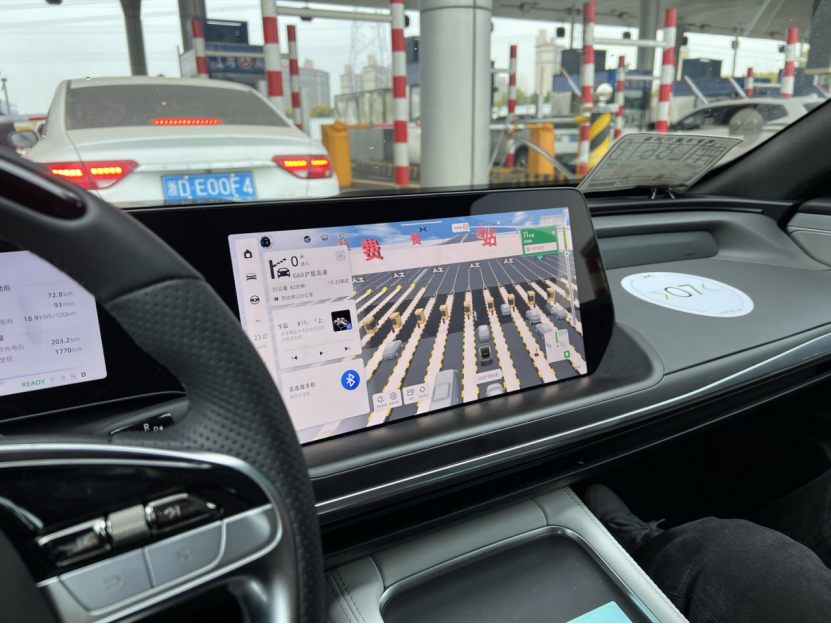
The most impressive aspect of the next-generation high-speed NGP is that in cities with high-precision map coverage, the control screen’s navigation map can render 3D models of toll stations.In actual use, merging onto main roads, changing ramps, and actively changing lanes, among other things, feel more decisive and straightforward compared to the first-generation Highway NGP. However, in some situations, for safety reasons, human intervention is still preferred in advance, without exploring its extreme limits.
City NGP mainly circled around the Bund in Shanghai, with the entire journey including overhead bridges and congested urban roads. When merging onto main roads faced with heavy traffic, its performance approaches that of experienced drivers, decisively changing lanes and merging in extreme situations.
Moreover, in congested sections, if the vehicle ahead is a tall container truck obstructing the driver’s view, the navigation map on the central control screen essentially provides a “clairvoyant” perspective, rendering a road model for your reference.
On sections without high-precision maps, it can display traffic light status, start and stop, and bypass temporarily parked vehicles on the roadside. In a map-less state, Enhanced LCC Lane Centering Assist can be used, but autonomous lane changes are not possible; indicator-assisted lane changes are allowed. More details can be found in upcoming video content.
In Conclusion
Starting with XPILOT, various companies began developing urban intelligent driving systems. Now, with Xpeng Motors evolving to XNGP, this not only demonstrates an upgrade in Xpeng’s intelligent driving capabilities but also signifies the direction of future intelligent driving systems: heavy perception, light mapping. Let’s all continue to roll up our sleeves and make progress together…
This article is a translation by ChatGPT of a Chinese report from 42HOW. If you have any questions about it, please email bd@42how.com.
